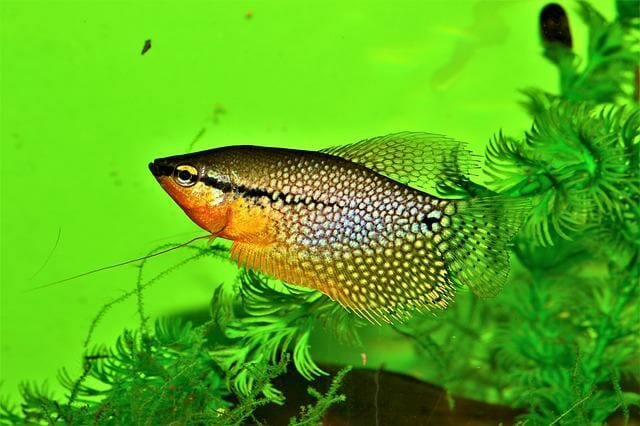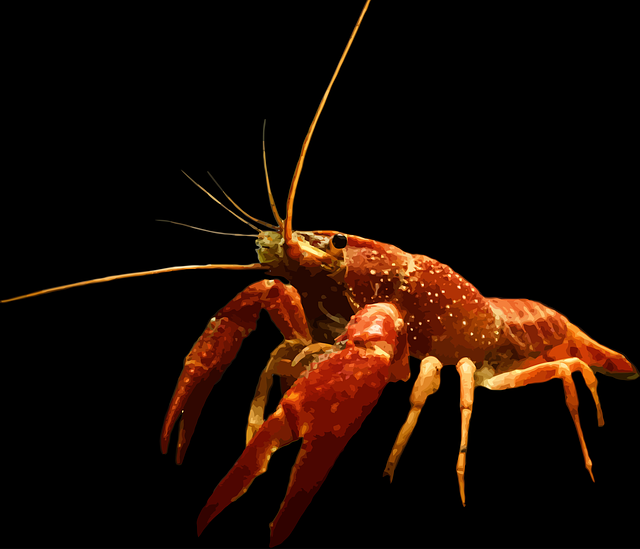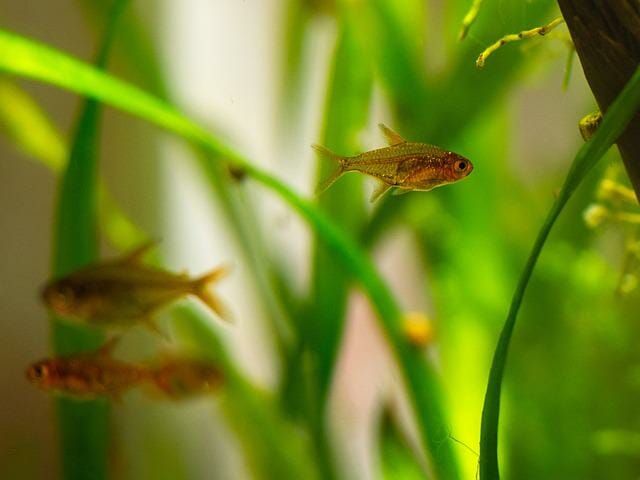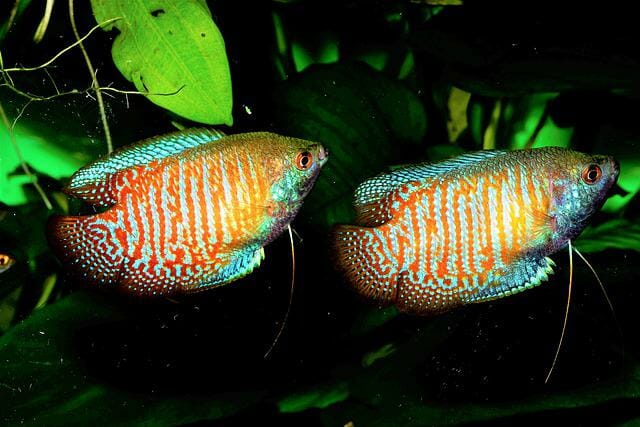Fish That Can Live With Gourami: Best Tankmates and Tips in Choosing One

Panda corydoras, glowlight tetra, can live peacefully with gourami, preferring calmer waters, and can be housed in a tank together, providing plenty of space.
Table of Contents
Best Gourami Tank Mates
Choosing the suitable fish tank mate for your gourami can be tricky. However, the process can be simplified by understanding the best gourami tank mates. Other compatible fish include plecostomus, corydoras catfish, dwarf gouramis, otocinclus catfish, and more.
However, if you have a gourami fish that is aggressive or territorial, it may not be the best choice for your tank. Therefore, before adding them to your aquarium, research your chosen fish species, so you know their behavioral tendencies.
Ultimately, choosing the suitable fish tank mate for your gourami is a task that can be simplified by taking the time to research the matter.
Panda Corydoras (Corydoras panda)
Panda corydoras are peaceful fish that can live with gourami. They enjoy good feeder foods such as flakes, pellets, etcetera, and will readily eat small food items. The panda corydoras easily accommodates other fish in the tank and is not aggressive towards them.
Glowlight Tetra (Hemigrammus erythrozonus)
The Glowlight tetra is a hardy fish that can live with gourami, the loaches being its natural tank mates. It is schooling fish and loves to play – great for someone who wants an active tank buddy. Glowlight tetras are relatively easy to keep as they grow slowly but steadily in size. They usually arrive at around an inch and a half in length.
Kuhli Loach (Pangio spp.)
Kuhli loaches are another fish that can live with gourami and enjoy the same diet. They are schooling fish and prefer a cooler water temperature (around 75 – 86°F). Kuhlis do well in an aquarium with many plants because they eat mainly vegetable matter.
Harlequin Rasbora (Trigonostigma heteromorpha)

Harlequin rasbora is a peaceful fish that can live well with gourami. They both enjoy the same water parameters and are compatible with tank mates of all types, including rasbora and tetras.
If you want to keep harlequin rasbora as a permanent pet, provide them with plenty of hiding spots and explore their natural surroundings together!
Bristlenose Pleco (Ancistrus sp.)
The bristlenose pleco is a hardy fish that can easily live with gourami. This freshwater pleco prefers slightly murky water and readily accepts the same diet as gourami – including live foods. They can be aggressive towards other fish, so finding a large enough tank is essential.
Brishlienose plecos are excellent algae eaters and keep your tank clean by feeding on algae; this means less work for you.
Amano Shrimp (Caridina japonica)
Amano shrimp are beautiful and peaceful fish that get along well with other gourami species. They thrive in warm water aquariums and should be fed a diet that includes live and frozen food items as they enjoy variety.
These little guys are omnivorous, meaning they’ll eat algae, aquatic insects, small fish, etcetera – making them the perfect addition to any tank!
Dwarf Crayfish (Cambarellus sp.)

The dwarf crayfish is an excellent addition to any tank with gourami and other schooling fish. They prefer cool temperatures (around 60-82 degrees Fahrenheit) and can be easily kept in an aquarium by adding some aquatic plants.
These guys are known for eating small invertebrates, so they’ll help keep your tank clean while providing food for your other fish!
Mystery Snail (Pomacea bridgesii)
The mystery snail is an excellent addition to any tank that has gourami. This tiny snail feeds on algae and can help keep your aquarium clean by eating excess plant matter. These snails are peaceful and get along well with other fish, making them an excellent choice for beginner aquarists.
Cherry Barb (Puntius titteya)
Cherry barbs are beautiful fish that require ample plant material to survive. As such, they make ideal tank mates for gourami as they can share the same food sources and live in peaceful coexistence.
They get along well with other bottom-feeders like corydoras catfish and dwarf gourami, making them an excellent choice for a community tank setup.
Otocinclus Catfish (Otocinclus sp.)
Otocinclus catfish (Otocinclus sp.) are great additions to any aquarium as they provide a healthy balance to the ecosystem. They feed mainly on algae and plant matter, so they will not compete for food with gourami. Furthermore, otocinclus catfish are peaceful and gentle fish that can live peacefully together with gourami.
Pygmy Corydoras (Corydoras pygmaeus)
Pygmy corydoras are peaceful fish that can quickly adapt to community tank conditions. They grow slowly but reach a size of around 1.3 inches, making them perfect for those looking for an exciting tank pet.
They are fond of water plants and will nibble on them from time to time, so provide some organic matter in their tank and some algae-eating fish like gourami or pleco species. Be sure to give these fish plenty of hiding places – they can be shy at first!
Ember Tetra (Hyphessobrycon amanda)
Ember tetras are peaceful and easy-to-care-for fish that can live peacefully with gourami. They get along well with other tropical fish, making them an excellent choice for a community tank setup.

Unlike many other tetra species, ember tetras do not require high water quality levels to survive – they will do just fine in most aquaria, provided you provide plenty of plant material and algae as their primary food source.
Other Gourami
Besides these species, other types of gourami can also be housed together in a community tank without problems. For example, corydoras catfish and dwarf gourami make an excellent pair as they are both bottom-feeders that prefer nutrient-rich water.
Similarly, plecos such as Corydoras Ambrosius and Balaenoptera sp. will eat small fish and plant material while keeping the aquarium clean.
Choosing Tank Mates for Gouramis: Things to Look for
When choosing tank mates for your gourami, it is essential to consider its natural environment. The gourami needs shelter from predators and a place to rest to thrive. Additionally, gouramis should have tank mates that are of a similar size, as they will compete for food.
Temperament
Temperament is one of the most critical factors in fish keeping. The gourami is a peaceful fish that can peacefully coexist with other small, tropical fish. Therefore, it should not be housed with larger or aggressive tank mates.
When choosing an appropriate tank mate, remember that gourami doesn’t like being crowded or left alone for long periods. So go for a small, shy fish that won’t mind remaining out of the way.
Water Values
The water values of your gourami will also affect its tankmates. The gourami needs a well-aerated aquarium with temperatures between 75° and 80° F. It should not be housed with temperature-sensitive fish, as they may die due to the cold temperatures.
Aquarium Set-Up
The aquarium setup for your gourami should be simple and easy to maintain. The tank should have a large surface area with plenty of driftwood, rock caves, and plants to provide hiding places. Additionally, keep an eye on their water quality – regular tank cleaning will help ensure everything stays healthy.
How Can I Tell if My Gourami Is Getting Along Well With Other Fish in Its Tank?
Observing their behavior is one way to test whether your gourami is getting along well with other fish in its tank. Gourami is usually peaceful and will not aggress against other tank mates, but they may react nervously if they feel threatened.
If there are any signs of aggression or territorial disputes, it may be best to temporarily separate the gourami from the other fish until things calm down.
